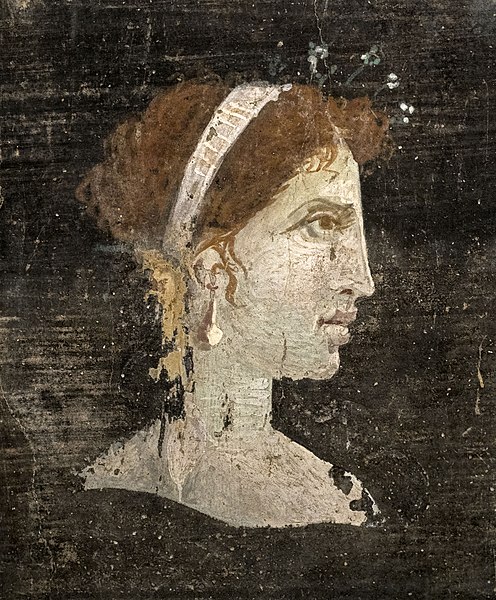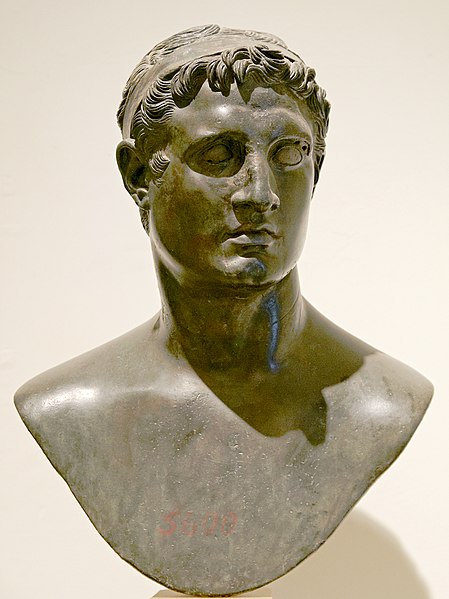Cleopatra VII Thea Philopator was Queen of the Ptolemaic Kingdom of Egypt from 51 to 30 BC, and its last active ruler. A member of the Ptolemaic dynasty, she was a descendant of its founder Ptolemy I Soter, a Macedonian Greek general and companion of Alexander the Great. After the death of Cleopatra, Egypt became a province of the Roman Empire, marking the end of the last Hellenistic-period state in the Mediterranean and of the age that had lasted since the reign of Alexander. Her first language was Koine Greek, and she was the only known Ptolemaic ruler to learn the Egyptian language.
The Berlin Cleopatra, a Roman sculpture of Cleopatra wearing a royal diadem, mid-1st century BC, now in the Altes Museum, Germany
Hellenistic portrait of Ptolemy XII Auletes, the father of Cleopatra, in the Louvre, Paris
Most likely a posthumously painted portrait of Cleopatra with red hair and her distinct facial features, wearing a royal diadem and pearl-studded hairpins, from Roman Herculaneum, Italy, 1st century AD
A Roman portrait of Pompey made during the reign of Augustus (27 BC – 14 AD), a copy of an original from 70 to 60 BC, and located in the Venice National Archaeological Museum, Italy
The Ptolemaic Kingdom or Ptolemaic Empire was an Ancient Greek polity based in Egypt during the Hellenistic period. It was founded in 305 BC by the Macedonian general Ptolemy I Soter, a companion of Alexander the Great, and ruled by the Ptolemaic dynasty until the death of Cleopatra VII in 30 BC. Reigning for nearly three centuries, the Ptolemies were the longest and final dynasty of ancient Egypt, heralding a distinctly new era for religious and cultural syncretism between Greek and Egyptian culture.
Ptolemaic Kingdom
Ptolemy as Pharaoh of Egypt, British Museum, London
Hellenistic bust of Ptolemy I Soter, 3rd century BC, now in the Louvre
A bust depicting Pharaoh Ptolemy II Philadelphus 309–246 BC








